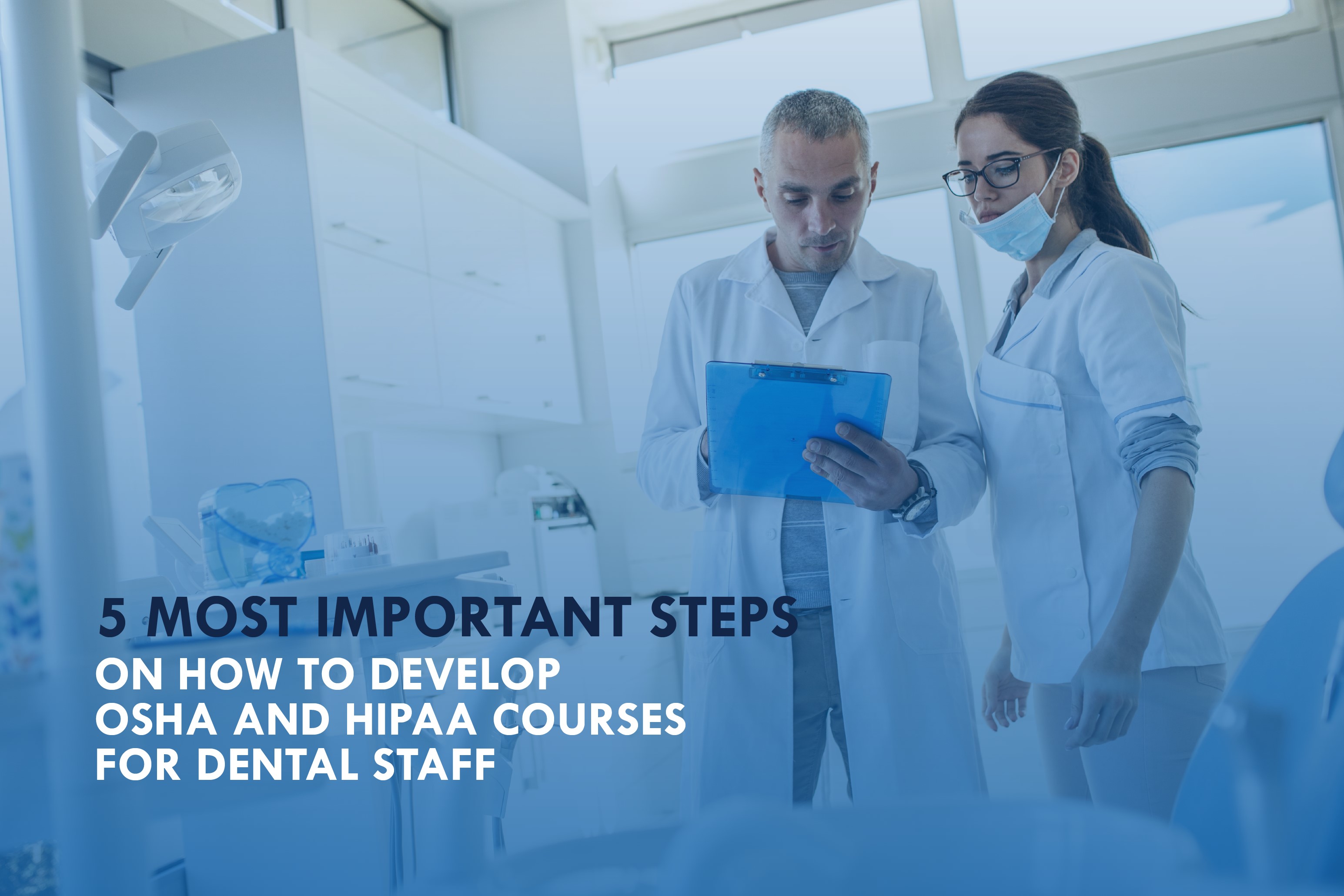Blog Center
Explore the latest stories and insights!

5 most important steps How to develop OSHA and HIPAA courses for dental staff
Date: 2023/06/14
Dental | 5 MIN READ
Tips for Developing Online Training Courses
Over the last few months, I’ve encountered more and more clients who are looking to develop practice-specific coursework for their team members. In the interest of transparency, many of these groups are large dental practices and/or DSO’s who have multiple locations and hundreds of team members to take care of. Although some small practices create similar programs, we typically see this type of thing from larger groups.
As you have probably already recognized, delivering the desired training in a standardized format is integral to ensuring everyone is on-board and understands policies, procedures and expectations. With that said, I’d like to craft a short list of tips if you have been thinking about developing some coursework of your own for your team, whether large or small. While this isn’t a template of “how to create online courses,” this is a similar formula we use here at Smart Training to create our OSHA and HIPAA courses.
Imagine you are looking to create material for a Fire Safety Compliance course.
The first step in the creative process is to spend some time thinking about what the goal of the course is. While this may sound straightforward, you might be surprised how many folks don’t give this first step the attention it deserves.
Imagine you are looking to create material for a Fire Safety Compliance course. Jotting that down and moving to the next step is clearly not going to get you anywhere. One needs to do research in state and local regulations as well as determine what the endgame is. Are we looking to create a complete course that is going to delve into each aspect at length or merely a brief topical course sharing basic terminology and concepts? This should all be outlined in this first step.
The second step of our theoretical course would be to clearly define the learning objectives, and to outline the goals we are hoping to achieve in this course. At the end of this step a viewer should be aware of what they can expect to learn in the course. Again, you would be surprised how many folks just dive right into information and ultimately overload their viewer leaving them with more questions than answers.
Our next step would be to present the information in a manner that provides the information but does not dwell on topics for too long. An example might be when someone is creating a PowerPoint presentation. In the presentation it is important not to be too wordy and to have some form of discrepancy between the wording on the slide versus what the narration is saying. Believe it or not, this technique increases engagement with the materials… we have all been to those presentations where it feels more like an audiobook than a training, demo or webinar…
Our second to last step is qualification. It is one thing to provide information, it is another thing entirely to qualify the viewer at the end of the presentation. What does this mean… testing! So many folks seem to think so long as someone sat through a presentation and the information was provided that constitutes training. While it may to some degree, it certainly doesn’t guarantee anything sunk in. Well-thought-out test questions are an unfortunately overlooked aspect to creating training courses. It is always recommended to “mix it up,” and provide some true or false, multiple choice, and even fill in the blank style questions at the end or throughout the presentation between key concepts.
Lastly, and this is as basic as it gets, thank your viewer for attending the training and being a valued team member. Yes, they are just words, but words matter!
Should you have questions about developing engaging content for your team, contact the experts at Smart Training any time!
One bonus item here to share. You do not have to work with SMEs and legal professionals to create good content for your team. There are some advanced topics where it would be recommended, but if you are looking to provide very basic information to large groups at one time or sporadically, follow the tips above and you should be in good shape. Of course, should you have questions about developing engaging content for your team, contact the experts at Smart Training any time!
Subscribe to Our Blog
You may also like